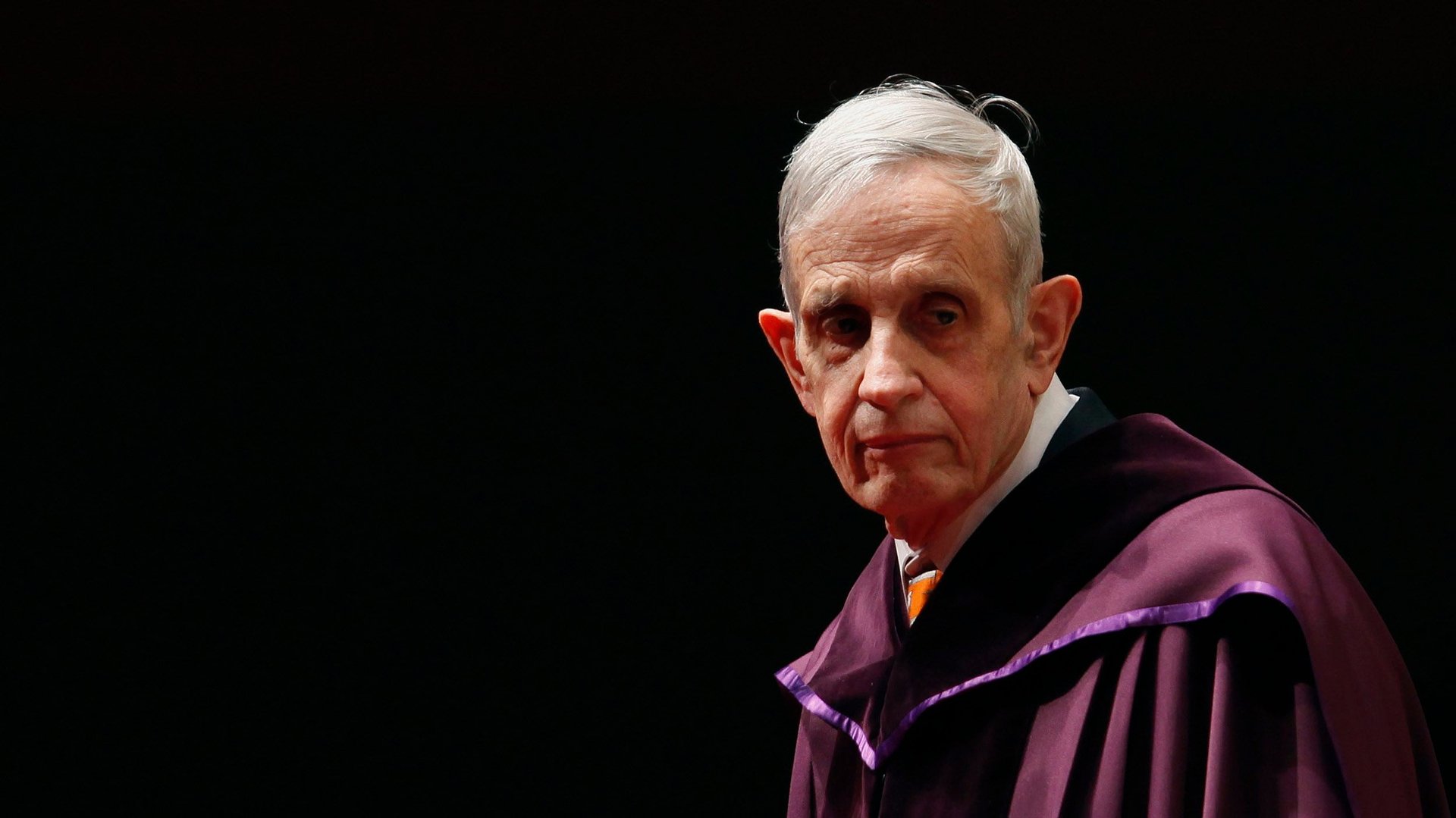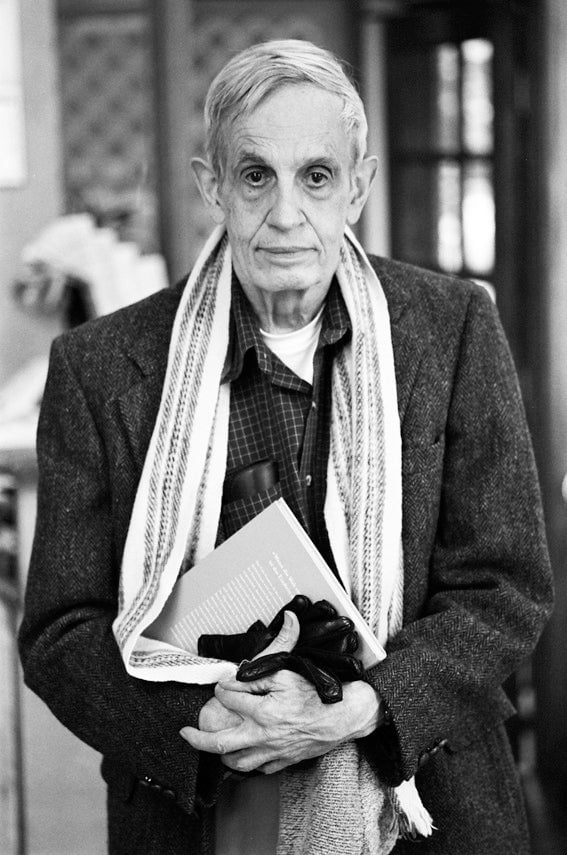John Nash: A life of brilliance, madness, and reawakening
If you belonged to the coterie that studied at Princeton University in the 1980s and 1990s, you would have seen or heard of a man waddling through the campus to a corner in the library, where he furiously scribbled equations few understood. Those who didn’t know him kept their distance, and those who did learned to let him be.


If you belonged to the coterie that studied at Princeton University in the 1980s and 1990s, you would have seen or heard of a man waddling through the campus to a corner in the library, where he furiously scribbled equations few understood. Those who didn’t know him kept their distance, and those who did learned to let him be.
It was rumored that the man was one of the greatest mathematicians of the 20th century, but that his best days were behind him because of a mental illness. Many in the outside world were using his work published in the 1950s and applying it to everything from trade negotiations to evolutionary biology, but they did not know whether he was dead or alive. Only a few knew that John Nash’s internal world was a violent one, where for 25 years he had been fighting a war against the very rational self that had contributed to his genius.
Grand ideas start small
The earliest hint of Nash’s genius was spotted by his mum, when, ironically, he received a “B minus” in his fourth-grade arithmetic class. The teacher said Nash, whose immaturity and social awkwardness had defined his time in school, couldn’t do the work well enough. But his mum knew that Nash had found his own, perhaps better, way to solve problems.
That search for original thinking only intensified as he grew up. He cared for achievements but set his own standards for them. He never made it to his high school’s honor roll, but managed to secure a full scholarship to attend Carnegie Institute of Technology (now Carnegie Mellon University). As an undergraduate student, mechanical engineering classes dulled him, and so did chemistry experiments. But eventually he found his intellectual home in mathematics, where in an accelerated program he graduated with a master’s.
He was accepted to Princeton’s doctoral program with a one-sentence recommendation letter from professor Richard Duffin: “This man is a genius.” And he knew that. He went about his daily life whistling Bach’s Little Fugue, filling up blackboards with equations, and acquiring adjectives such as “haughty,” “detached,” “spooky,” “isolated,” and “queer.”
He feared no one and never minced his words. Nothing mattered to him more than the pursuit of the biggest problem he could lay his hands on. When he had something to show he didn’t hide it either. He accosted Albert Einstein and John von Neumann, both intellectual giants that walked Princeton’s campus then, with ideas he thought were original, but wasn’t let down by their reactions.
He graduated at the age of 22 with a doctorate after writing a 27-page dissertation, that built on von Neumann’s work, despite his supervisor not being sure if it “was of any interest to economists”. In fact, when he formally published the result in a journal, he shortened it further to 317 words, which probably is the shortest paper to have ever won its author a Nobel Prize.
He had made a great contribution to the field of game theory, creating what is known today as the Nash Equilibrium, which provides a compelling way to analyze situations where two or more players are competing. An equilibrium occurs when, according to Nash, no player would change their own strategy knowing fully well what others’ strategy is.
But Nash didn’t know the value of his work then. Instead, he soon began working on other problems that were considered more important by the mathematical community at the time. Even today, it is joked that Nash won the Nobel Prize in economics for what he thought was his most trivial work.
The fallen genius
Things seemed to have been going very well for Nash. He married Alicia and fathered a child. He found a job at the Massachusetts Institute of Technology. His work brought him some fame, including being featured on the cover of Fortune magazine. He seemed to be on the path to a great career. But underneath it all, as Sylvia Nasar, author of A Beautiful Mind, which later became an Oscar-winning movie and made Nash a celebrity, puts it:
…was chaos and contradiction: his involvements with other men; a secret mistress and a neglected illegitimate son; a deep ambivalence toward the wife who adored him, the university that nurtured him, even his country; and, increasingly, a haunting fear of failure. And the chaos eventually welled up, spilled over, and swept away the fragile edifice of his carefully constructed life…
He would not have known this but, by the age of 30, Nash had finished his life’s most important works. While not unusual for mathematicians to run out of grand ideas at a young age—the mathematicians Srinivasa Ramanujan and Bernhard Riemann were in their 20s when they did their greatest work—Nash’s next few decades would be torturous.

Rationality is a scientist’s tool to unravel the mysteries of the world we live in. But a complete conviction that the universe is a rational place—that everything has meaning—caused Nash to lose 25 years of his life. In 1959 he was diagnosed with paranoid schizophrenia. For many days before then, he had begun codebreaking what he said the voices in his head had told him were secret messages in the pages of Newsweek.
Harvard professor George Mackey would ask of Nash, “How could you, a mathematician, a man devoted to reason and logical proof… believe that extraterrestrials are sending you messages? How could you believe that you are being recruited by aliens from outer space to save the world?”
The world loves a mad scientist, and, in John Nash, it got one. But most of us would not have known his story if it wasn’t for what Nasar calls Nash’s third act: after the brilliance and madness came the reawakening.
Even today, schizophrenia remains poorly understood. And recovery from this “cancer of the mind” is still rare. The support of Alicia and his old friends at Princeton were key to keep Nash going. But it was the enchantment of solving bigger mathematical problems that eventually helped him fight the imagined people in his head. “I emerged from irrational thinking,” he said in 1996, “ultimately, without medicine other than the natural hormonal changes of aging.”
Without this reawakening, Nash would likely not have won the Nobel Prize, which is handed out by a committee that zealously guards the image of the prize. But what probably mattered more to Nash was that his fight against schizophrenia gave him an opportunity to get back to his work, and hope that his son John may successfully fight the disease from which he, too, has been suffering from a young age.
John Forbes Nash Jr., born on June 13, 1928, was killed along with his wife, Alicia, on May 23, 2015 in a car accident in New Jersey.